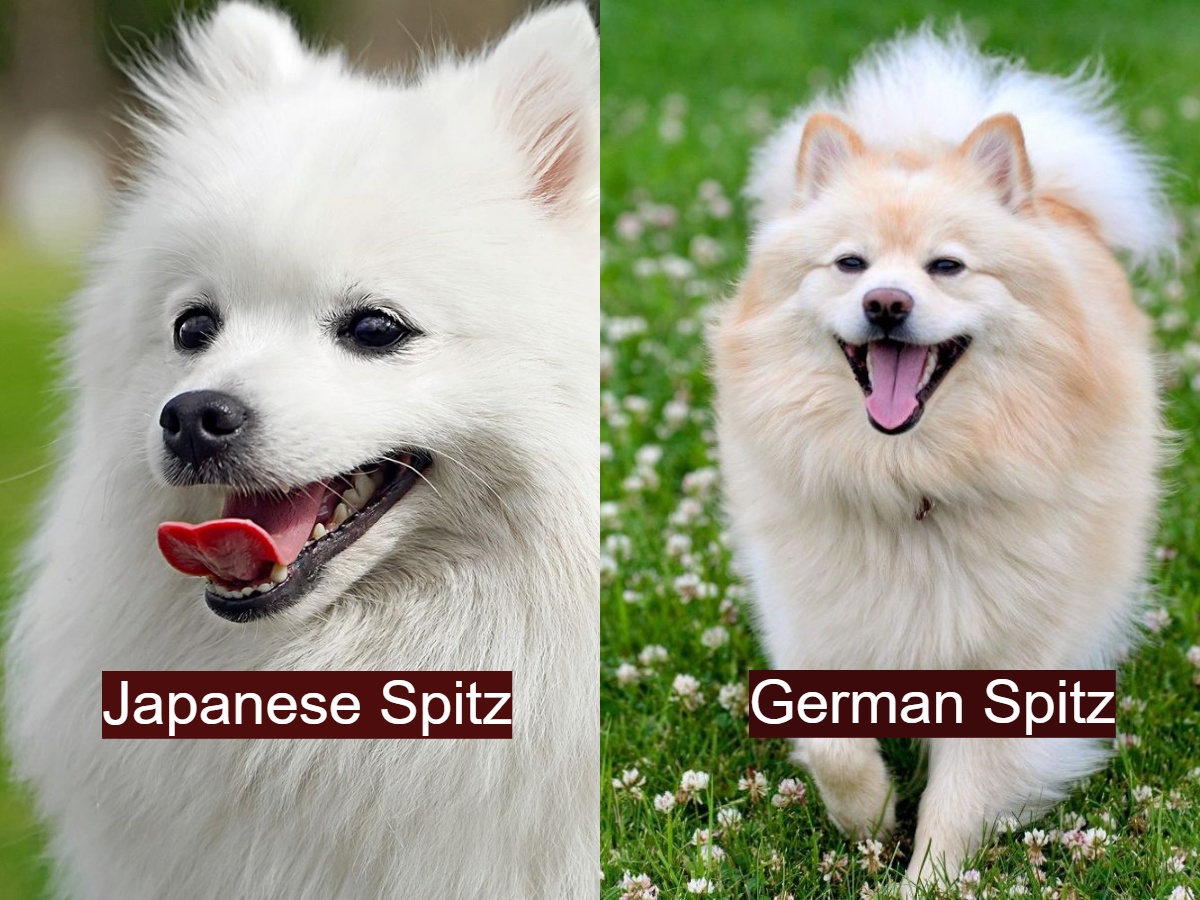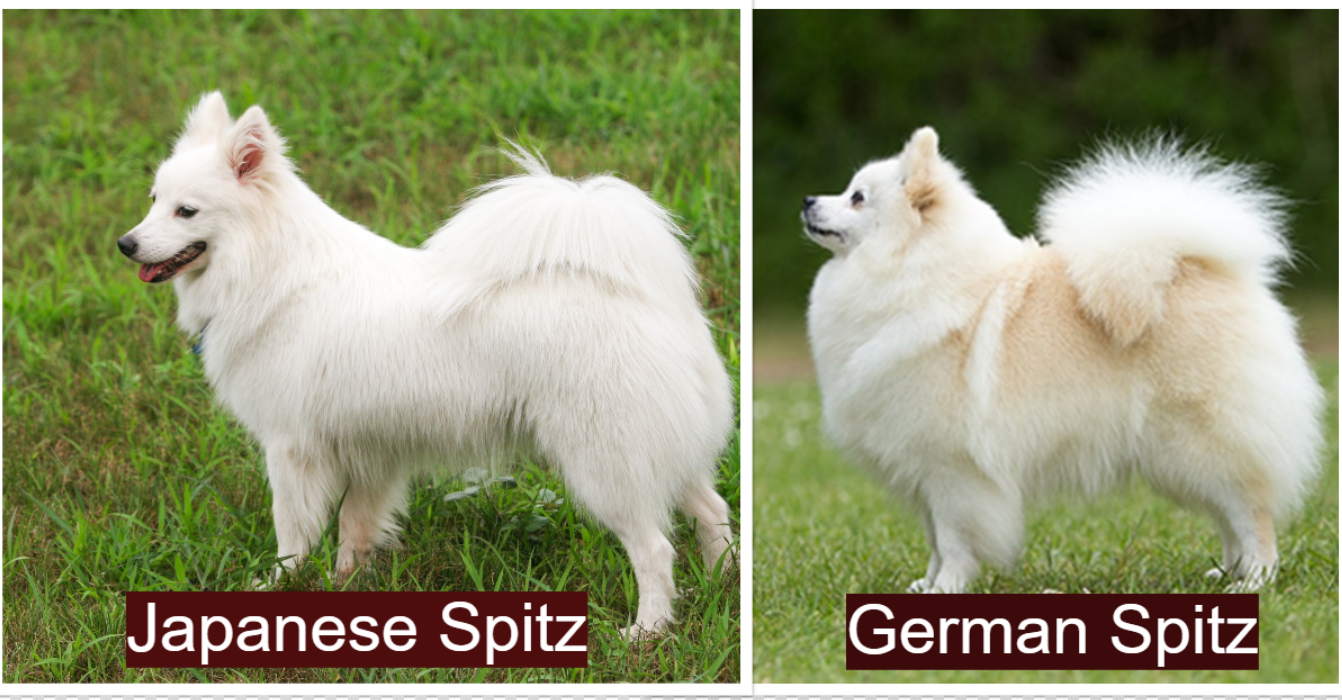The Japanese Spitz and German Spitz are two distinct dog breeds that share similarities in appearance but differ in various aspects. The Japanese Spitz is a small to medium-sized breed of dog that falls under the Spitz type, originating from Japan. On the other hand, the German Spitz represents a single breed of spitz-type dogs hailing from Germany.
In this article, we will explore the similarities and differences between the Japanese Spitz and German Spitz, delving into their physical appearance, temperament, training needs, exercise requirements, health concerns, and suitability for different lifestyles.
Japanese Spitz vs German Spitz: Purpose
Japanese Spitzs were bred to be small, yet charming, companion dogs. Renowned for their cuteness, loyalty, friendliness, and intelligence, these dogs possess an innate desire to safeguard their families, despite not being specifically bred as watchdogs. German Spitz dogs, on the other hand, were initially bred for a multitude of tasks on farms, including herding and guarding. As the centuries unfolded, certain lines of this breed were selectively bred to assume smaller sizes, eventually evolving into their current role as cherished small companion dogs.
Japanese Spitz vs German Spitz: Facial Appearance
The Japanese Spitz has a distinct wedge-shaped face. They possess large oval eyes that are dark and slightly slanted, complemented by white eyelashes. Additionally, their nose, lips, and eye rims are black. Japanese Spitzs bear a striking resemblance to the white Pomeranian, Samoyed, and American Eskimo Dog. However, the German Spitz stands out with its foxy head, alert eyes, and small, pointed, closely-set ears, which contribute to its unique and cheeky appearance.
Japanese Spitz vs German Spitz: Size
When comparing the Japanese Spitz and German Spitz breeds, one noticeable difference lies in their size. The Japanese Spitz typically stands between 12 to 16 inches tall at the shoulder, making it a small-to-medium sized dog. On the other hand, the German Spitz falls into the small-sized category with an average height range of 10 to 12 inches.
While both breeds possess a similar compact build, their size variation is quite significant. However, it is worth mentioning that individual dogs may slightly deviate from these general standards as variations can occur within each breed.
Japanese Spitz vs German Spitz: Temperament
- Japanese Spitz: Playful, cheerful, intelligent, obedient, active, loyal
- German Spitz: Robust, attentive, devoted, lively, trainable
The Japanese Spitz and German Spitz are both popular breeds known for their distinctive personalities. The Japanese Spitz is renowned for its friendly and extroverted nature. They have a high level of energy, which makes them lively and playful companions. This breed is known to be highly affectionate towards their owners, always seeking attention and love. Furthermore, they tend to get along well with children and other pets in the household, making them excellent family pets.
On the other hand, the German Spitz is characterized by their intelligence, independence, and alertness. They are generally more reserved and cautious when meeting new people or encountering unfamiliar situations. While they can form strong bonds with their owners, they may take some time to warm up to strangers. However, once a bond is formed, this breed becomes loyal and devoted companions.
Both breeds require early socialization to ensure a well-balanced temperament throughout their lives.
Japanese Spitz vs German Spitz: Coat
The Japanese Spitz boasts a lavish, snow-white double coat. This breed sheds its undercoat twice a year, revealing a thick and abundant outer coat. During the shedding process, known as "blowing their coat," the entire undercoat is shed within a span of approximately 2 to 3 weeks. To maintain the cleanliness of your surroundings, daily brushing is necessary to remove the fur. However, it is inevitable that some hair will find its way onto your clothes, furniture, and floors. Fortunately, for the majority of the year, the Japanese Spitz is a low-maintenance breed, only requiring a weekly brushing and occasional baths if the dog gets into any messy situations.
On the other hand, the German Spitz also possesses a profuse double coat that sheds twice a year. During these shedding periods, the entire undercoat is shed within a span of about 2 to 3 weeks. Regular brushing is essential to remove the old coat, and it is to be expected that the dog's hair will be scattered across your clothes, furniture, and floors. However, the good news is that shedding is minimal during the rest of the year. A quick brush every couple of days, along with a thorough grooming session once a week, will suffice to prevent the formation of mats and knots.
Both the Japanese Spitz and the German Spitz require diligent grooming to manage their shedding. However, with proper care and attention, these breeds can be kept looking pristine and their surroundings free from excessive hair.
Japanese Spitz vs German Spitz: Exercise requirements
The Japanese Spitz may be small in size, but don't let that fool you. These little bundles of fluff have a surprising amount of energy. They require daily exercise to keep them happy and healthy. A brisk walk or some playtime in the backyard should do the trick. They also enjoy mentally stimulating activities, such as puzzle toys or obedience training.
The German Spitz is also an energetic breed, but they tend to be a bit more laid-back compared to their Japanese counterparts. They will still benefit from daily exercise, but they won't demand it quite as insistently. Whether it's a leisurely walk or a game of fetch, the German Spitz will be content as long as they get some activity in their day.
Japanese Spitz vs German Spitz: Health Concerns
The Japanese Spitz breed, as a whole, is known for its robust health and active nature. However, it is worth noting that there have been isolated instances of Patella Luxation within this breed. To ensure the well-being of your furry companion, it is advisable to have your veterinarian conduct a thorough examination for this condition. When considering the purchase of a Japanese Spitz puppy, it is crucial to engage with responsible breeders who possess a wealth of knowledge regarding the breed's specific health concerns. By collaborating with reputable breeders, prospective owners can acquire the necessary education to make informed decisions.
Conversely, the German Spitz breed has been observed to have occasional cases of Progressive Retinal Atrophy (PRA), Retinal Dysplasia (RD), and Patella Luxation, according to the AKC. Nevertheless, it is important to emphasize that the majority of German Spitz dogs enjoy good health overall. To safeguard the well-being of your future companion, it is imperative to procure puppies exclusively from responsible breeders who diligently conduct eye tests on their breeding stock.
Japanese Spitz vs German Spitz: Lifespan and Price
While both breeds are known for their strong and healthy physique, the Japanese Spitz tends to have a slightly longer lifespan compared to the German Spitz. On average, Japanese Spitzes can live up to 12-16 years, whereas German Spitzes have a lifespan of about 11-14 years. This variation can be attributed to several factors such as genetics, breed-specific health issues, and overall care provided by the owners.
Furthermore, when it comes to price, Japanese Spitzes are generally more expensive than their German counterparts. The average cost of a Japanese Spitz puppy ranges from $1,500 to $2,500 depending on factors like lineage, pedigree, and breeder reputation. In contrast, German Spitz puppies typically range from $400 to $800 in price due to lower demand and availability in some regions.
Japanese Spitz vs German Spitz: Compatibility and Suitability
The Japanese Spitz is a versatile breed that can adapt to various households. They are well-suited for families, singles, or seniors looking for a loyal and loving companion. Due to their moderate exercise needs, they can thrive in urban or suburban environments. It's important to note that they prefer to be with their human family and may not do well if left alone for extended periods.
On the other hand, the German Spitz is also a versatile breed that can fit into different lifestyles. They are great for families with children, seniors, or individuals who want a playful yet not overly demanding companion. German Spitz dogs are adaptable to apartment living as long as they get their daily exercise and mental stimulation.
Conclusion
In summary, the Japanese Spitz and the German Spitz are both charming and lovable breeds. They have similar energy levels and exercise requirements, making them suitable for individuals or families looking for a moderately active dog. However, the Japanese Spitz tends to be slightly more energetic, while the German Spitz is known for its laid-back nature.
When it comes to health, both breeds are generally healthy, but they can be prone to specific conditions that require attention. Regular grooming is essential for both breeds to maintain their beautiful coats. Additionally, they are both adaptable to various living situations, but the Japanese Spitz may be more prone to separation anxiety.
Ultimately, the choice between these breeds will depend on your personal preferences and lifestyle. Whether you opt for the Japanese Spitz or the German Spitz, you're sure to find a loyal and wonderful companion that will bring joy to your life.







